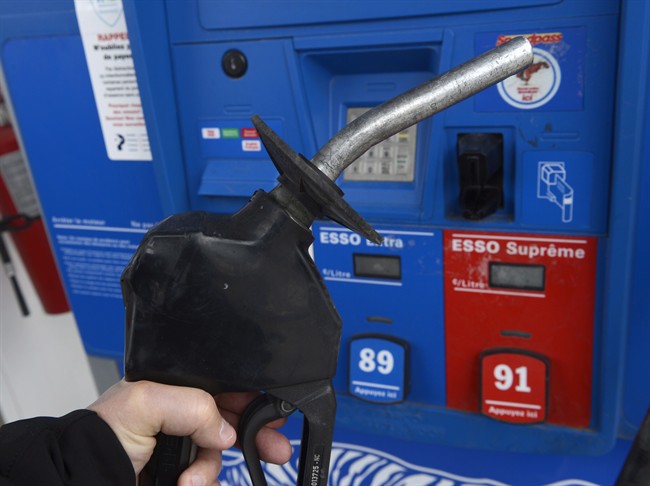OTTAWA – While Canadians may beg to differ, the Bank of Canada should be pleased with Friday’s new inflation report that will almost certainly show consumer prices were sharply higher in April.

The consensus among economists is for the annualized consumer price index to rise half a point to two per cent, which will put it exactly at the central bank’s desired target for the first time in two years – and the main reason is gasoline prices.
Analysts note the recent rise in the cost of filling up the family car has been playing an increasingly larger role in the finances of Canadians.
READ MORE: Here’s how much more we’re paying for gas than Americans are
National Bank senior economist Krishen Rangasamy points out that Thursday’s report on consumer spending for March, which showed a surprising 0.1 per cent dip from February, could in part be laid at the doorstep of the recent run-up in gas prices.
“Note that the gasoline share in total retail spending was close to record highs in the first quarter (above 13 per cent), in sharp contrast to the declining share seen south of the border,” he wrote in the bank’s “hot charts” section.

Get weekly money news
“The above-seasonal gasoline price increase … acted as a tax hike in Q1,” he added.
According to Bank of Montreal economist Sal Guatieri’s calculation, Canadians are now paying about 30 per cent more than Americans at the pump.
One reason is the weaker loonie, given that oil prices are set in U.S. dollars. Another is that eastern Canadian refineries mostly import Brent oil, which is generally more expensive than U.S. blends like West Texas Intermediate crude.
READ MORE: Canada’s annual inflation rate rose to 1.5% in March
“So the approval last March by the National Energy Board of the reversal of Line 9, which would provide refineries in the East with Western Canada Select oil should be positive … for consumers, who should eventually benefit from cheaper gasoline.”
But regardless of the causes, gas prices have been a major factor in the steady climb in Canada’s annual inflation rate of late. As recently as October, the CPI sat at 0.7 per cent, which may have been fine for Canadians but not for the Bank of Canada, which views too-low inflation as damaging to the economy as too-high inflation.
Attaining the two per cent target won’t totally satisfy the central bank, however, even if as expected it will remain there for some time.
Bank of Canada governor Stephen Poloz has already signalled that he believes inflationary pressures remain soft, and the proof is the core inflation reading, which is expected to inch north only slightly in Friday’s report to 1.4 per cent.
Poloz says underlying inflation, which the core represents because it excludes volatile items such as energy and fresh fruits and vegetables, won’t likely reach the sweet spot of two per cent until 2016, about the time most expect he will start hiking interest rates.





Comments